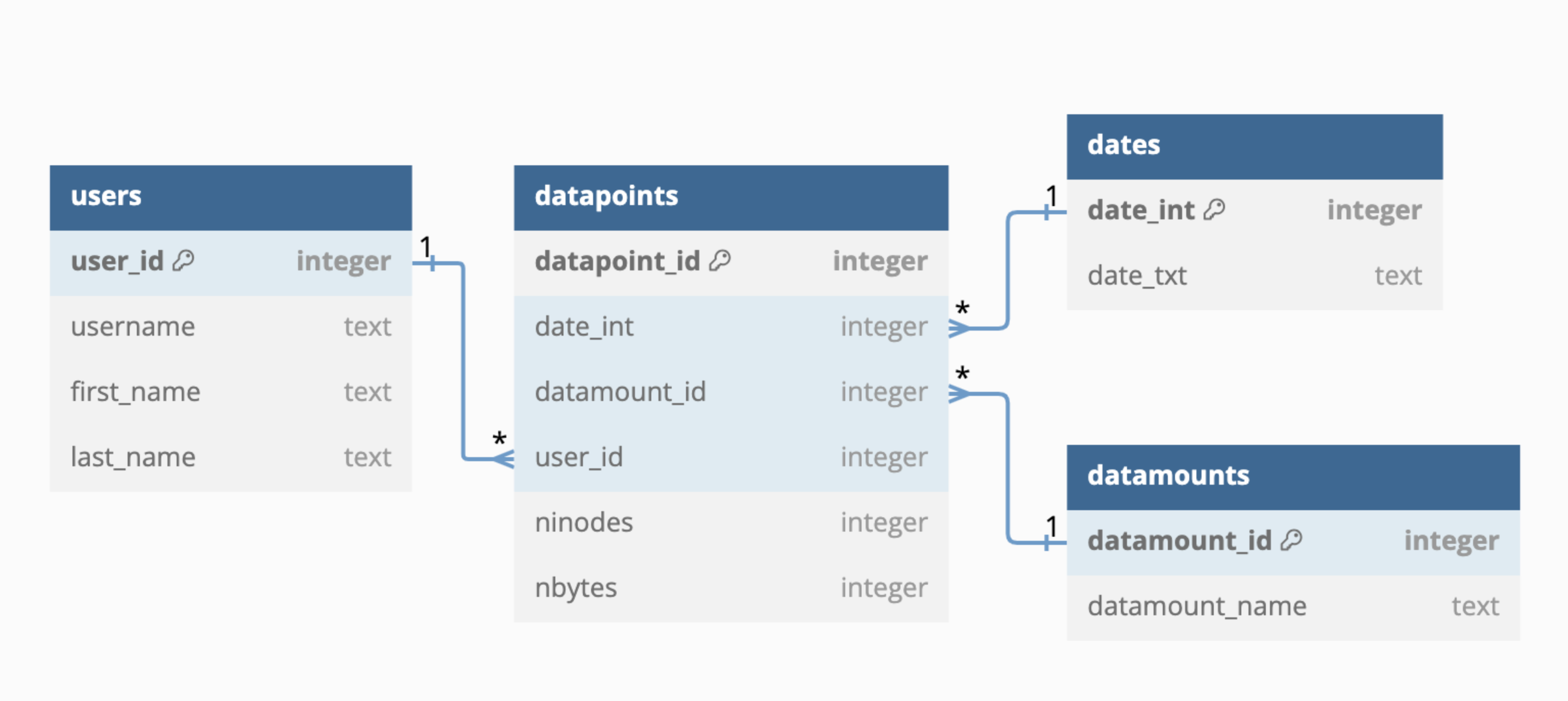spacesavers2_pdq_update_db¶
pdq = Pretty Darn Quick
spacesavers2_pdq creates TSV (or JSON) file per-datamount per-run (typically per-date). If run daily, this soon creates a lot of files to keep track of. Hence, it is best to save the data in a sqlite db. spacesavers2_pdq_create_db command creates the basic schema for that db. Then this command can be used to populate the database.

Inputs¶
--tsv:.tsvor.tsv.gzcreated usingspacesavers2_pdq--database:.dbfile created usingspacesavers2_pdq_create_db--datamount: eg.CCBRorCCBR_Pipeliner--date: integer date in YYYYMMDD format
usage: spacesavers2_pdq_update_db [-h] -t TSV -o DATABASE -m DATAMOUNT -d DATE [-v]
spacesavers2_pdq_create_db: update/append date from TSV to DB file
options:
-h, --help show this help message and exit
-t TSV, --tsv TSV spacesavers2_pdq output TSV file
-o DATABASE, --database DATABASE
database file path (use spacesavers2_pdb_create_db to create if it does not exists.)
-m DATAMOUNT, --datamount DATAMOUNT
name of the datamount eg. CCBR or CCBR_Pipeliner
-d DATE, --date DATE date in YYYYMMDD integer format
-v, --version show program's version number and exit
Version:
v0.13.0-dev
Example:
> spacesavers2_pdq_update_db -t /path/to/tsv -o /path/to/db -m datamount_name -d date
Output¶
updated db file¶
sqlite ".db" file with 4 tables is updated.
NOTE:
- new users are automatically added to "users" table
- new datemounts are automatically added to "datamounts" table
- new dates are automatically added to "dates" table
- if >0 datapoints exist in the ".db" for a (date + datamount) combination then warning is displayed and no data is appended